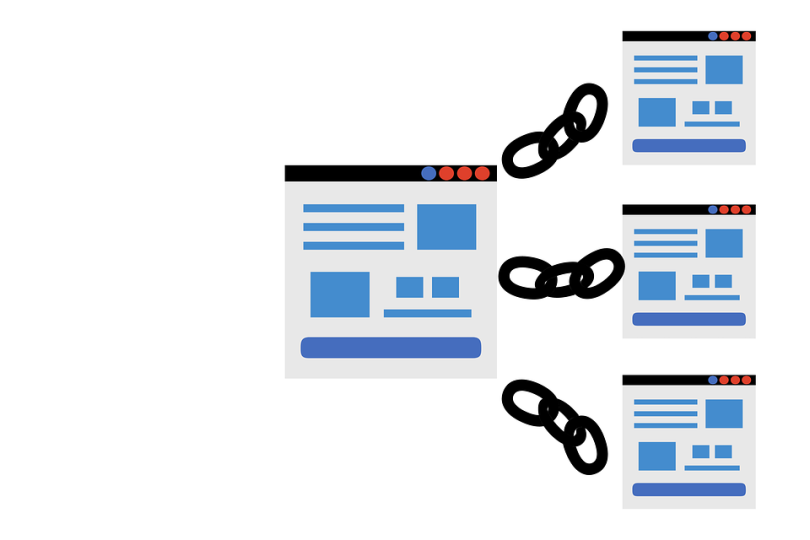Your content needs internal linking before it can rank. Google finds your posts and pages better when they are linked from somewhere on the web. Internal links also link to your content and give Google an idea of your website’s structure.
They can create a hierarchy on your site, allowing you to give the most important pages and posts more link value than other, less valuable pages. Regularly evaluate and improve your internal linking strategy for your site’s SEO. It is very important. This is one way to improve the relevancy of your website. By adding the right internal links, you make sure that Google notices:
- contact pages
- relationship between pages
- and page value
There are many things to consider when setting up your internal linking strategy. Of course, exactly how you do this depends on your site and your goals, but the steps below are a good rule of thumb.
What is an internal linking strategy?
1. Determine the ideal structure for your site
We always advise website owners to think of their websites as a pyramid. Above that is your homepage. Below are some sections or categories, and below are individual posts and pages (maybe have subcategories in between). If you do this well, your website menu should reflect this structure. In our ultimate site structure guide, you can read how to create the best site structure for your site.
2. Decide what your most important content is
Next, you need to select your most important content. If you are not sure, please read our article on the content of the cornerstone. In short, it is the best and most complete content. It comes to the core of your business. This is the content you want people to find when they search for the topics or products that you specialize in.
Since you want to let Google know that this is your most important content, you should add a lot of links to it. There are several points at which you can link to your cornerstone content. Here, we cover the most popular options, from your post copy to your navigation.
3. Add text links
When you write different articles on a particular topic, you must link them together. This shows the work of Google and its users! These articles are thematically linked. You can link directly from sentences in your copy or add links at the end of your post. In addition, you want to show Google which article is your cornerstone: your most complete article on the topic. To do this, you must add a link to the cornerstone in all articles related to this topic. And don’t forget to link from the bedrock to the individual posts.
On our blog, there is a content article titled “The Ultimate Guide to Keyword Research”. This post will rank in Google search results for all relevant search queries on [keyword search]. So we added links to other related articles, such as “7 Keyword Research Mistakes to Avoid,” “What is Keyword Research,” or “Focus on Long-tail Keywords” to the main article. We link to these posts from the original article. By doing this, Google will find that the ultimate guide contains the most information about [keyword research]. So, in the end, Google ranked the Definitive Guide higher than other shorter keyword search publications.
4. Hierarchical linking pages
If you have hierarchical pages on your website, link the main pages to the sub-pages and vice versa. Also, don’t forget to link sibling pages together. These pages should be linked to a well-structured site and it makes perfect sense to link them in this way.
5. Consider adding another related section
Many plugins and modules add entire sections of related posts to your posts. If you are using one, we recommend that you test if linked posts are linked posts. If you’re not sure, linking to posts manually is probably best.
6. Try adding navigation links
In addition to linking from related posts and pages, you can make your primary content more authoritative by adding links to it from the home page or the top navigation. You should do this for posts and pages that are important to your business. This gives these posts or pages a lot of link value and makes them stronger in the eyes of Google.
7. Add links to your categories
Categories, like categories and tags, help you organize your site and help users and Google understand your content. If you have a blog, it can be useful to add internal links to the categories the post belongs to. Adding category and tag links helps Google understand your blog structure and helps visitors navigate to related posts more easily.
8. Consider adding links to popular or recent posts
The last option to mention is to create internal links to the most popular or recent posts on your website. It is best to create these sections in the sidebar or footer of your website so that they appear on all pages and posts. As the link value of these most popular/recent posts is taken from different pages, it increases. In addition, posts will be easier to access for visitors, which will increase traffic – and more traffic is a positive sign for Google.
Additional tips about types of internal linking
Nofollow links
It is also likely that you will have SEO junk links to your site. For example, if you have a login link for your customers on your homepage, you don’t want to reveal the value of the link to your login page – that page doesn’t need to rank high in search results. I used to prevent unrelated links from losing link value by giving them a no-follow tag. The nofollow tag tells Google not to follow the link: so no link value is lost.
Right now you might be thinking, “I’m not following the less important links to give the more important links more link value.” While this worked in the past, Google is becoming more capable. It now appears that the link value for these nofollow links is not automatically carried over to other links on the page. A no follow link is counted as a link and the link value for that link is lost. So it makes more sense to have fewer links on a page than to unfollow some links.
Note that adding the nofollow tag does not mean that these target pages cannot be found in Google search results. If you don’t want pages or posts to appear in search results, you should also give them an index. The noindex tag means that Google must not display the page and must not index the content for Google to appear in search results.
anchor texts
Once you have determined which links should be on the page and which pages should receive the link value, it is important to use the correct anchor text. Anchor Text is the clickable text that visitors see. For example, the anchor text for two of the internal links in the example below is “link systems” and “paid links”:
If you over-optimize your anchor text, it can harm your website. And over-optimization means keyword stuffing. It used to be that you could give all your anchor text a keyword and Google would rank your website higher for that keyword. Today, Google is smart enough to understand that the content surrounding the anchor text says more about the keyword’s relevance than the anchor text itself. So make sure the anchor text in your copy looks natural: using keywords is fine, but don’t add the same keywords to the anchor text for every link.








Leave a Comment